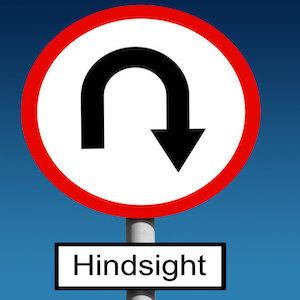By Dr. Ken Broda Bahm

Jurors are often put in the position of assessing the probability or risk of something at the time a decision was made, before the consequences can be known. “How likely is it that a given result will be the outcome from a behavior?” is a rational question, and there may be good reasons and strong evidence to show that the chances were rather small. But ultimately, the outcome happened. So, in the jurors’ minds, that risk is likely to look a lot like 100 percent. There is a long line of clear research conclusions showing hat humans will use hindsight to routinely overestimate the probability of an action’s consequences, even to the point of converting that probability to a certainty.
This hindsight bias is, of course, problematic for the law, and influences a wide swath of cases. So what can you do about it? Every attorney has their “Monday Morning Quarterback” speech, but is that enough, and do we have evidence that it works? Until now, the answer has been, “Not really.” But recent research (Conklin, 2022) to be published in a forthcoming issue of Baylor Law Review shows that a debiasing prompt given to jurors before evidence is heard leads to significant reductions in hindsight bias. In this post, I’ll provide a snapshot of that approach.
The Hindsight Problem
Hindsight isn’t mental laziness, or a mistake. Instead, it reflects our tendency to believe that the world is stable and predictable. There is also a “just world” bias in favor of believing that a bad outcome could have been recognized and prevented in advance. So hindsight is attractive. Professor Conklin’s article summarizes a long line of research showing that hindsight is both pervasive and notoriously difficult to control in legal settings, and that it affects not just jurors but judges as well.
You can ask a decision-maker to ignore or to “set aside” that bias, but that is challenging when it is part of their cognitive apparatus. A variety of solutions have been tried, with generally mixed results. Some solutions, such as asking individuals to create written lists of all possible outcomes, are tough to practically apply in a trial scenario. The traditional route of adding a jury instruction just prior to deliberations is a step that might check off the box for the judge, but the research shows that it is largely ineffective, probably because jurors at that stage already are likely to have durable impressions of responsibility.
The Pre-instruction Solution
The approach tested was to give 132 mock jurors an instruction in advance. The following language was tested in two different litigation scenarios:
Part of your duties in this case will be to determine the likelihood of injury given the defendant’s actions. This will be difficult because we already know that the injury did occur and we tend to overestimate the likelihood of something happening if we know that it did happen. Therefore, as you hear the facts of the case, try and view them as someone who does not know the outcome. This way, you will not be biased in predicting the likelihood that the harm occurred.
Compared to those reviewing the same cases without hearing the pre-instruction, those who received this message in advance of evidence made significantly lower estimates of the likelihood that a given behavior would have led to injury. The author concludes, “This study reveals that presenting a debiasing prompt at the beginning of trial is an effective and pragmatic method for mitigating the harms of hindsight bias in trial outcomes.”
When you’re trying a case, you’re not always in charge of the instructions received. But you do have some influence. This latest study reinforces the importance of pre-instructions generally, as well as the particular importance of giving jurors a heads-up on hindsight in advance.
Other Posts on Hindsight:
- Don’t Just Warn About Hindsight
- Careful, Your Animation May Be Promoting Hindsight
- Don’t Enter That Time Machine: Carefully Answer “What Would You Have Done Differently?”
Conklin, M. (2022). I Knew It All Along: The Promising Effectiveness of a Pre-Jury Instruction at Mitigating Hindsight Bias. Baylor Law Review. URL: https://papers.ssrn.com/sol3/papers.cfm?abstract_id=3962419